Using the Energy Expression#
Now we turn our attention to the plug-in for the simulation code that wishes to use the forcefield. There are two approaches to handling the previous steps of selecting and setting up the forcefield and energy expression. The first approach is to keep it separate from the simulation codes using the forcefield_step or a similar plug-in to handle the forcefield setup. The advantage of this approach is that the forcefield setup is global, so if a flowchart has several simulation steps using either the same code or different ones, the user only has to setup the forcefield once and then all simulations will use that setup. This approach reduces redundancy, inconsistencies, and errors.
The other approach is for the simulation plug-in to handle all the aspects of the forcefield setup and use. This is clearly the preferred approach where the forcefield is hidden from the user and captive to the simulation or only one forcefield is usable. Examples where this would be a good approach might be
for cleaning up poor structures, which might use a variety of algorithms and specialized to more general forcefields to progressively clean the structure.
for a plug-in specialized to a certain property or class of structures where the results are tuned for a specific forcefield or group of forcefileds and the user has limited choice and control by design.
for initial implementations of simulation engines using their native tools and files, though hopefully over time the implementation will be generalized to allow the users to use other forcefields with the engine, any forcefields sepcific to that engine with other codes.
If a plug-in is using forcefields provided by plug-ins in either of the two scenarios then the plug-in first needs to verify that it can handle the requested forcefield, and if so it needs to translate the generic SEAMM energy expression to the form needed.
Checking that the requested forcefiled can be handled is straightforward. The energy expression provides metadata about the terms and their functional forms in the energy expression. The plug-in needs to check that it can handle all of the terms and functional forms. If not it needs to throw an appropriate error.
Once it is determined that the energy expression can be handled, the next step is to translate the energy expression provide by SEAMM into the form the simulation code uses. This is of course specific to the code being used, but in general it involves creating an input file (e.g. LAMMPS) or a topology file (e.g. AMBER and GROMACS). This is the main task of the plug-in, along with gethering and setting up the control parameters for the simulation, e.g. the temperature, pressure, stepsize, length of simulation, etc.
Once the simulation is setup the plug-in is responsible for running the calculation, usually using the standard SEAMM framework, and then processing and analyzing the results of the simulation, as needed.
The SEAMM cookiecutter will provide initial versions of the files need to the plug-in, along with much of the code for e.g. running the calculation. You task as a developer will be to tweak some of the details, such as the executables to run, and fill out the code with the specific translation and analysis needed for the simulation.

